TECH TIP
PORTING AND CONNECTOR OPTIONS IN FLUID POWER SYSTEMS
WHAT IS A PORT?
WHAT IS A CONNECTOR?
PORTS
Metal-to-Metal Ports
The two most common metal-to-metal ports are NPT (National Pipe Thread) and BSPT (British Standard Pipe Taper). NPT and BSPT connections are installed using pipe sealant. When the fittings are tightened the threads are distorted. This metal-to-metal distortion contact is what seals the connection. Over tightening can distort the threads too much and create a leak. Repeated assembly and disassembly may also result in a leak due to thread distortion.
O-Ring Type Ports
The two most common o-ring type ports are SAE (Society of Automotive Engineers) Straight Thread and BSPP (British Standard Parallel Pipe). These ports seal using an elastomeric o-ring or seal. The threads are used only for mechanical strength. O-ring style connectors can be repeatedly assembled and disassembled without damaging their ability to seal. The o-ring or seal would typically be replaced during reassembly.
CONNECTORS
37 Degree Flare Type Fittings
Flare type fittings are widely used in hydraulic systems due to their low cost and wide availability. Flare type fittings use a metal to metal seal between the flared tube end and the flared face on the fitting. If over tightened to stop a leak the tube flare can be damaged requiring the tube to be replaced. Many companies offer conical seals for improved sealing. A hybrid version is also available which adds an o-ring groove on the flared face of the fitting to improve sealing. 37 degree tube fittings are typically used in low to medium pressure hydraulic systems. Sizes range from 1/8” to 2”.
Flat Face O-ring Type Fittings
Flat face o-ring fittings require a 90 degree flare on the end of the tube. This can be accomplished by brazing on a spud or using a special machine to form the tube end. These fittings cannot be over tightened. Due to the brazing and special equipment required, the flat face type fitting is not as widely used as other types. These fittings are typically used on medium to high pressure hydraulic systems. Sizes range from 1/4” to 2”.
Flareless (Bite-Type) Fittings
Flareless type fittings do not require any special tube end preparation. Tightening the nut onto the fitting draws the furrule into the body. This compresses the furrule around the tube creating a positive metal to metal seal. There are flareless fittings available that incorporate an elastomeric seal in addition to the metal to metal seal. Flareless fittings are typically used on medium to high pressure hydraulic systems. Sizes range from 1/8” to 2”.
FLANGES
O-ring Type Flanges
The mating flange has a groove machined into it for an o-ring. The mating flange can be bolted to a flanged port or to a companion flange which has four tapped holes and a machined surface. The o-ring is installed inside the groove and seals against the machined surface of the flanged port or companion flange. SAE Code 61 flanges are rated up to 3000 PSI. SAE Code 62 flanges are rated up to 6000 PSI. There are other varieties of o-ring style flanges, but the basic sealing method remains the same. o-ring type flanges are typically used on medium to high pressure hydraulic systems. Code 61 sizes range from 1/2” to 5”. Code 62 sizes range from 1/2” to 3”.
ANSI Flanges
The ANSI style flange uses a rubber or metallic flat gasket between two identical flanges. ANSI flanges are available in a raised face and a flat face design, although the raised face design is more widely used. ANSI flanges are rated by a class number. This class number refers to the steam pressure rating of the flange. So, for example a class 150 flange used in a hydraulic system may be used at pressures above 150 PSI. The most common classes are 125, 150, 300 and 600. ANSI flanges are typically used on low pressure hydraulic systems. Sizes range from 1/2” to 24”.
WHAT MUST I KNOW TO SELECT THE PROPER CONNECTORS?
Selecting the wrong porting and connectors in a fluid power system can often lead to a system that leaks, is difficult to service, or has high installation cost. Many variables should be considered when selecting the porting and connectors:
- System operating pressure
- Fluid type – For proper seal selection
- System operating temperature
- System vibration level
- Where the system be installed
- The skill level of personnel installing/servicing the equipment
- The type of ports and connectors currently installed at the end users location
CONCLUSION: WHAT ARE THE BENEFITS OF SELECTING THE PROPER CONNECTORS?
- Leak free system (One drop of oil every second = 1.13 Gallons per day or 405 gallons per year.)
- Lower initial cost
- Less downtime
- Lower operating cost over the life of the equipment
- Replacement parts are readily available locally
- End user service personnel can service the equipment
Note: “Tech Tips” offered by Flodraulic Group or its companies are presented as a convenience to those who may wish to use them and are not presented as an alternative to formal fluid power education or professional system design assistance.
Experts in fluid power, electrical and mechanical technologies.






